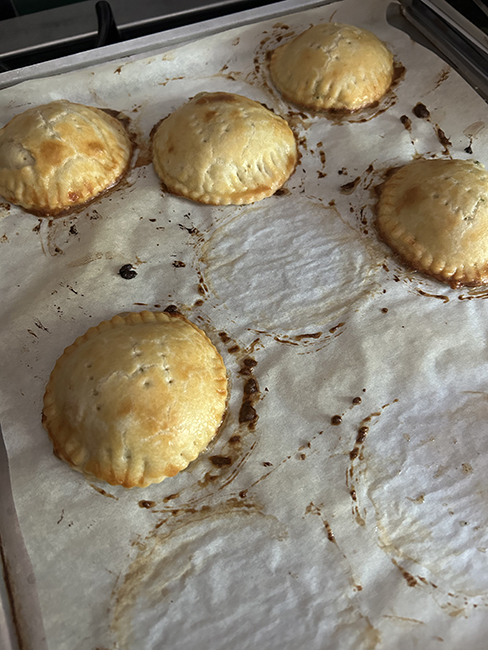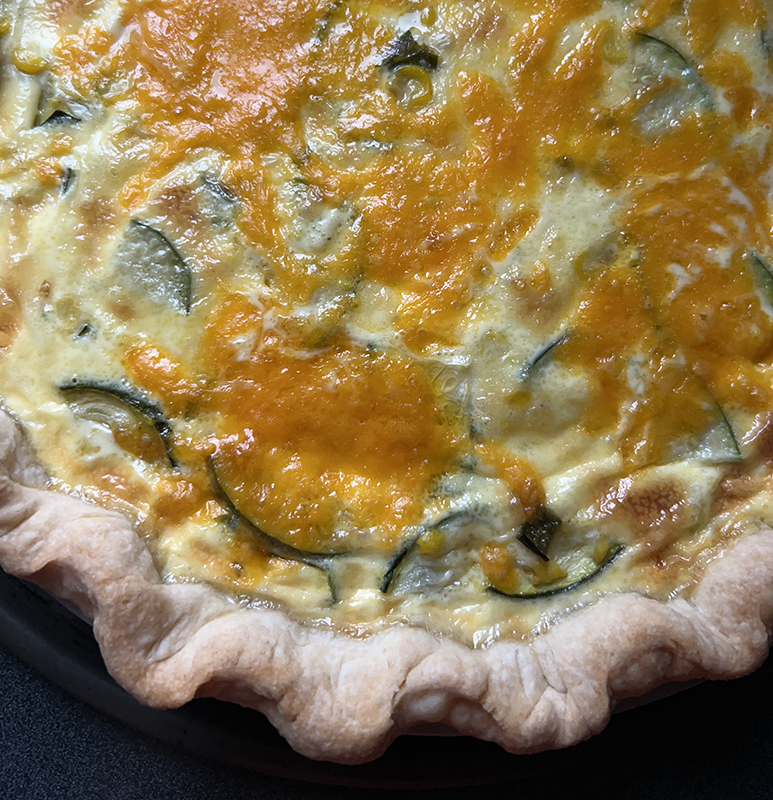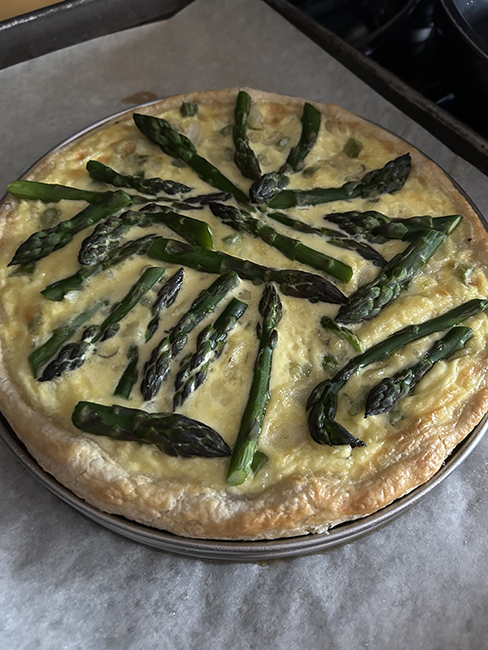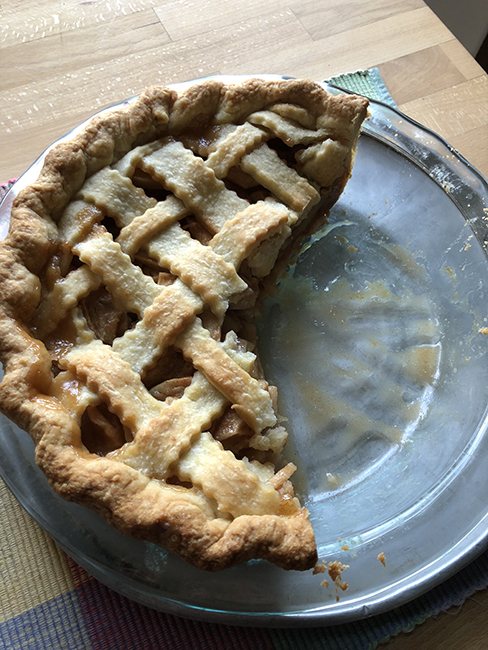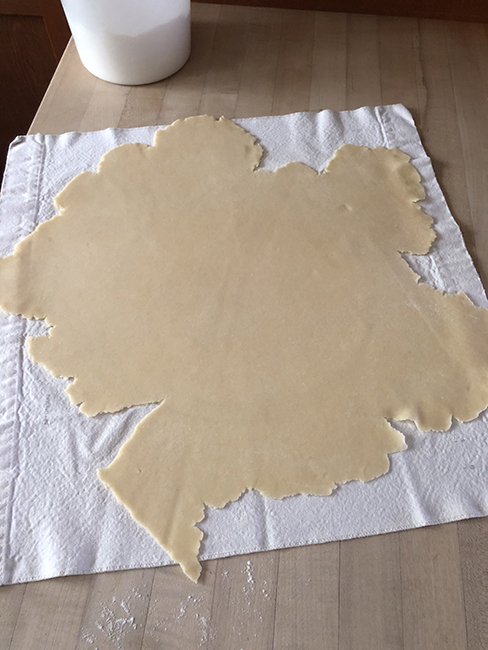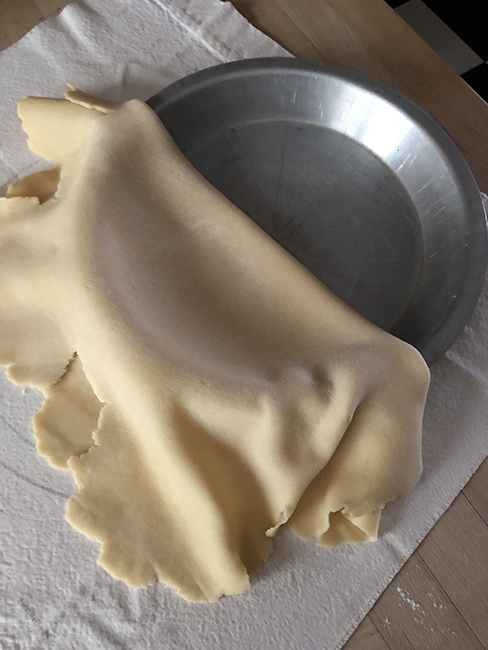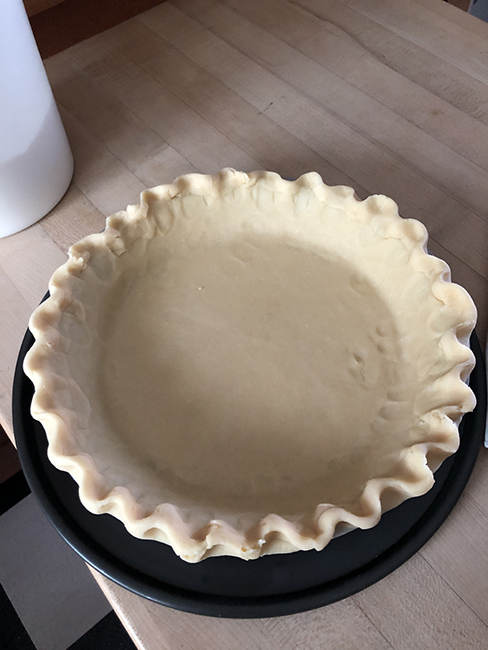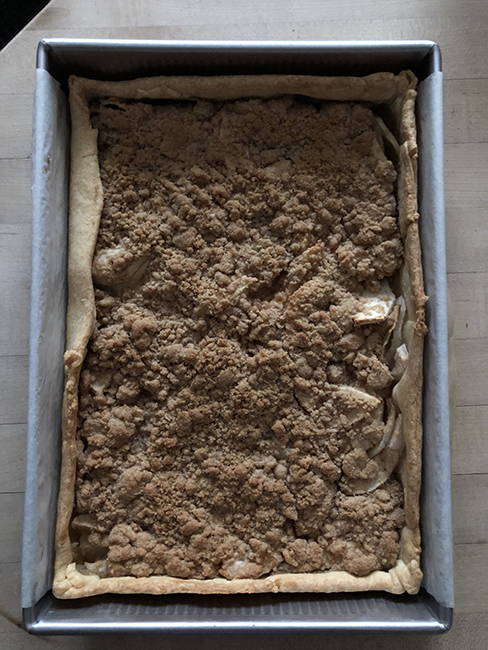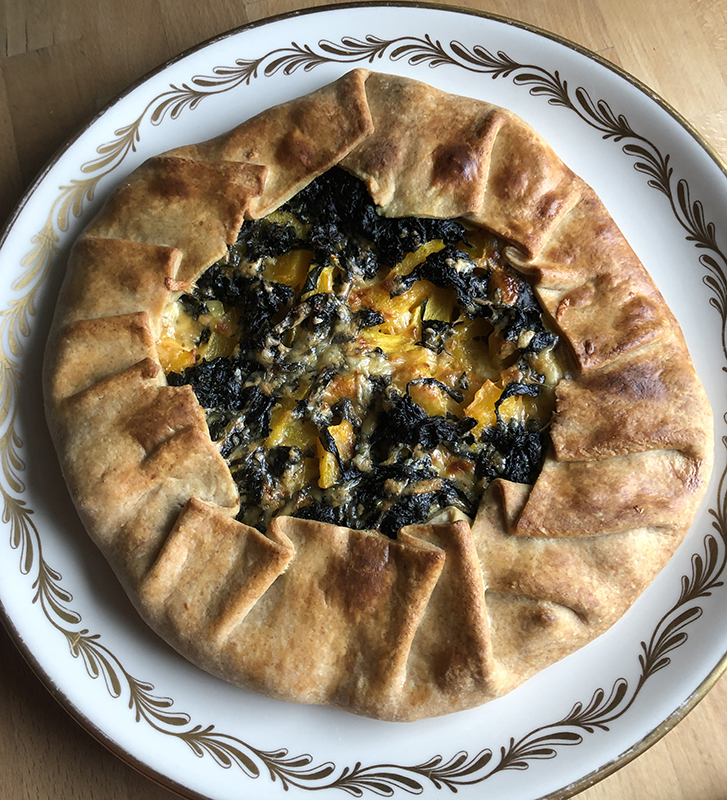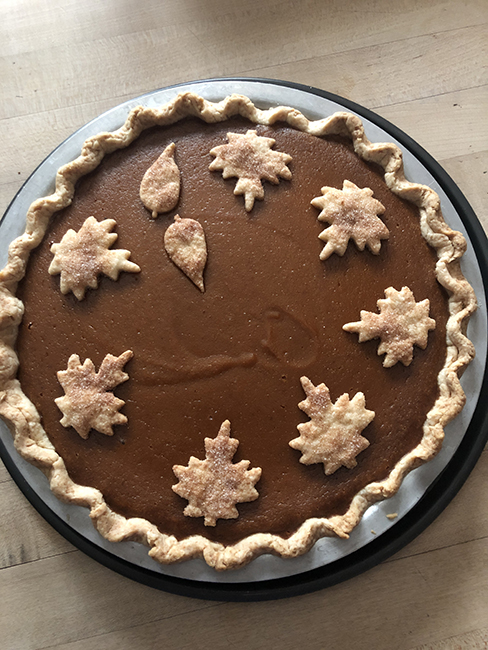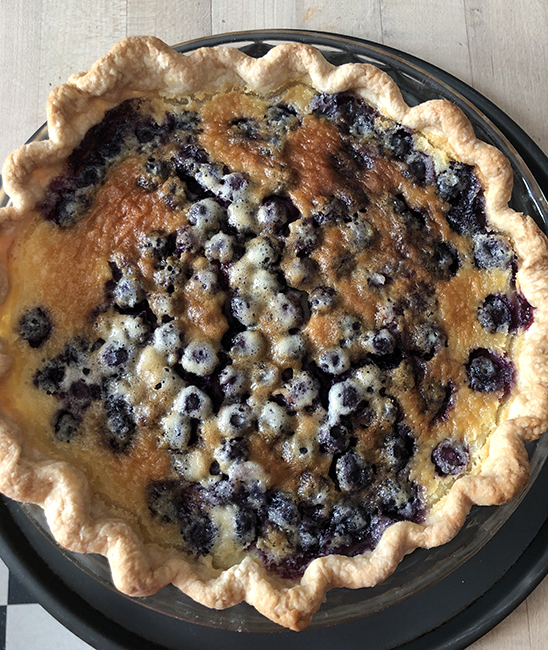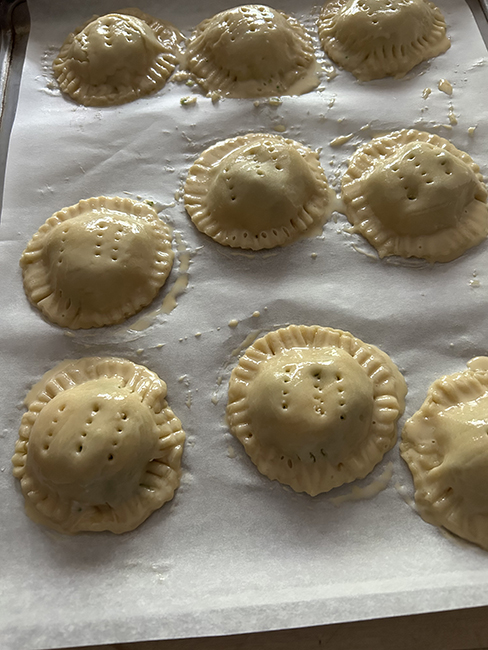
I was intrigued by this recipe because it uses a thick cheese sauce as the base for the filling, and you mix in the cooked broccoli. It’s kind of like making the base of a souffle. The original recipe says to chop the broccoli, blanch it, cool in an ice bath, and finally chop it really fine in your food processor. That seemed like overkill to me; I suppose it’s what you would do to conceal the broccoli from your kids! Or to prevent someone from taking a bite and getting hit on the chin with a big sprig of broccoli …. I simply chopped the broccoli and cooked it, then drained and rinsed with some cold water and proceeded, and there were no biting in mishaps when we ate the hand pies for brunch!
You could make these vegan by using vegan butter or vegetable shortening in the crust and non-dairy milk and vegan cheese in the filling. And instead of egg wash, brush the pies with the non-dairy milk.
Makes 8-9 handpies
Crust:
1 1/2 cups unbleached flour
2 teaspoons sugar
pinch of kosher salt
1 stick (8 Tablespoons) unsalted butter
1 tablespoon vegetable shortening
3-4 tablespoons cold water
Cheese sauce:
2 tablespoons unsalted butter (I used some garlic butter I had on hand and omitted the garlic)
one medium shallot, finely chopped (about 3 tablespoons) or 1/4 cup onion, also finely chopped
1 garlic clove minced or put through a press
Kosher salt and freshly ground black pepper
2 tablespoons tablespoon all-purpose flour
1/2 cup whole milk
1/2 teaspoon sweet paprika
1/2 teaspoon dry mustard
salt and ground white pepper to taste
scant cup grated cheddar or other sharp cheese of your choosing (about 2 ounces)
Filling:
I large head of broccoli, finely chopped
Assembly:
1 egg, beaten with a dash of milk or cream or water
equipment: rolling pin, parchment, pastry brush, 3-inch cutter
- Make the crust and chill: Measure the flour into a bowl and add the sugar and salt. Slice the shortening and butter into cubes and drop into the flour mixture. Cut the fats into the flour with your fingers, a pastry blender, or paddle attachment of your stand mixer, until the mixture resembles coarse meal. Drizzle in the water by tablespoons while stirring, until you’ve got a bunch of small clumps of dough. Dump out onto a floured surface, knead lightly to bring it together, and then flatten the dough into a disk and wrap in wax paper or plastic wrap and chill for about an hour. (Or, the original recipe calls for a 14.1 ounce box of refrigerated pie crust that you just have to unfold.)
- Make the cheese sauce: Melt the butter in a medium saucepan over low heat. Add the onion and garlic and cook until softened but not browned, a minute or so. Stir in the flour with a wooden spoon, and cook until bubbly. Switch to a whisk pour in the milk in a steady stream while whisking constantly. Continue whisking until no lumps remain. Stir in the paprika, mustard, and salt and pepper to taste. Scrape into a mixing bowl. Stir in the cheese and set aside to cool while you cook the broccoli.
- Cook the broccoli: In a medium saucepan (you can use the same one from the cheese sauce, cleaned out), bring enough water to cover the broccoli to a boil and add a good pinch of salt. Add the broccoli cook until tender but still bright green 3-5 minutes. Pour the broccoli into a large strainer to drain, and rinse with cold water to stop the cooking. Leave in the strainer to drain while you roll out the crust. When it’s well-drained, measure 1 cup of the cooked broccoli and mix into the cheese sauce for the filling. If you have extra, save for another purpose, like lunch the next day.
- Roll out the crust and assemble the pies: Heat the oven to 400° and line a baking sheet with parchment. Divide the dough in half and on a lightly floured surface, roll out the first half. Cut 8-9 circles with the three-inch cutter and arrange the circles on the parchment-lined sheet. Brush each circle with egg wash, and place 2 tablespoons of filling in the center of each. Roll out the second half of the dough, and cut 8-9 more circles. Place a circle on top of each of the pies and with your fingers, press the edges to adhere, then crimp the edges with a fork. Brush the tops of the pies generously with the egg wash, then stab 2-3 rows of steam holes in each top with your fork – do this after the egg wash otherwise the wash will close up the holes! Place in the preheated over and bake for 20-25 minutes until browned. Serve warm or at room temperature.
